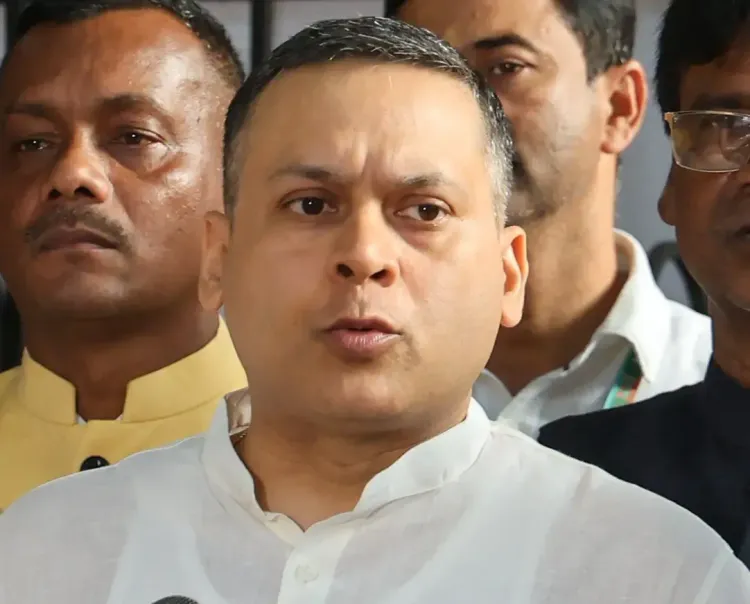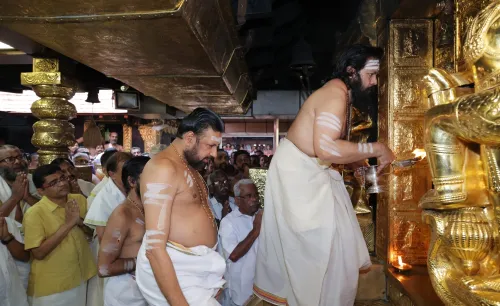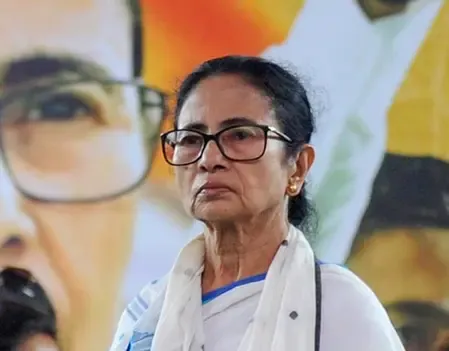Is India Really a Manufacturing Economy in 2025? BJP Responds to Rahul Gandhi

Synopsis
Key Takeaways
- India is projected to be a leading manufacturing economy by 2025.
- Significant growth in electronics and mobile production has been recorded.
- FDI in the manufacturing sector has dramatically increased in recent years.
- Manufacturing is essential for job creation, particularly for skilled workers.
- Government policies are critical in fostering manufacturing growth.
New Delhi, Oct 2 (NationPress) In a fierce rebuttal to Congress leader Rahul Gandhi's claims made during his overseas speech, BJP IT Cell chief Amit Malviya emphasized that by 2025, India will undoubtedly be recognized as a manufacturing economy.
During a presentation at EIA University in Medellin, Colombia, Gandhi asserted that “India doesn’t manufacture.”
In response, Malviya took to social media platform X, presenting “hard data and sectoral evidence” that dismantled Gandhi's argument.
“Whenever Rahul Gandhi travels abroad, he finds a platform to belittle and misrepresent India. His narrative is stuck in 2013-14. However, India in 2025 is a manufacturing economy on the rise,” Malviya asserted.
He criticized Gandhi’s statements for being outdated, stating that the progress in various sectors such as electronics, pharmaceuticals, automobiles, and textiles shows a thriving manufacturing landscape.
“Continue misrepresenting India abroad if you wish; our factories are rewriting the narrative,” he added.
Malviya also provided data on the advancements achieved between 2014-15 and 2024-25, highlighting significant growth in electronics, mobile manufacturing, and pharmaceuticals.
He noted that the production of electronics surged sixfold from Rs 1.9 lakh crore (2014-15) to Rs 11.3 lakh crore (2024-25).
Electronics exports increased eight times, from Rs 38,000 crore to Rs 3.27 lakh crore; mobile phone production escalated from Rs 18,000 crore to Rs 5.45 lakh crore – a remarkable 28 times growth; and mobile phone exports jumped from Rs 1,500 crore to approximately Rs 2 lakh crore – a staggering 127 times increase.
“India has transformed from a major importer to a global hub, now standing as the world’s second-largest mobile manufacturer,” Malviya remarked.
He also highlighted the rise in foreign direct investment (FDI) in electronics since FY21.
Regarding the pharmaceutical sector, Malviya proclaimed that India is now the “Pharmacy of the World.”
This sector ranks third by volume and fourteenth by value, fulfilling over 50 percent of global vaccine requirements and about 40 percent of US generic drugs.
He discussed the influx of investments and global confidence, revealing that total FDI over the past 11 years (2014-25) amounts to $748.78 billion—a 143 percent increase compared to $308.38 billion during the Congress administration from 2003 to 2014.
Additionally, he mentioned that the Indian automobile industry is now the fourth-largest automobile producer, achieving notable growth.
The textiles sector has emerged as a key driver of employment and exports, contributing about 2.3 percent to GDP, 13 percent of industrial output, and 12 percent of total exports.
This sector is anticipated to generate approximately 45 million direct jobs, primarily within MSME clusters.
“Manufacturing isn’t solely about machines; it’s fundamentally about people. It’s one of the largest job creators, particularly for semi-skilled and skilled workers,” Malviya stated.
He noted that around 17 crore jobs have been created over the past decade, with the current unemployment rate at 5.1 percent.
“A comprehensive suite of policies—encompassing manufacturing, logistics, industrial growth, urban development, and entrepreneurship—is propelling India’s next growth phase. Additionally, GST 2.0’s streamlined two-slab structure with reduced rates on essentials has lowered compliance costs and stimulated consumption,” Malviya concluded.









